Abstract
Partially diploid Escherichia coli K-12 hybrids recovered from mating with a Salmonella typhimurium Hfr strain were found to differ with respect to the manner in which they conserved the added Salmonella deoxyribonucleic acid (DNA). Five of the diploid hybrids examined appeared to maintain the Salmonella DNA as part of a functional F-merogenote; these hybrids were sensitive to the male-specific phage, R-17, responded as males to the female-specific phage, φII, and transferred their inherited Salmonella genetic markers at high frequency in conjugation experiments. Six diploid hybrids were observed which were not sensitive to R-17, and from which the added Salmonella DNA was not transmissible in conjugation tests; nevertheless, these hybrids responded as males to φII, and the Salmonella chromosomal fragments were conserved in them as parts of supercoiled, circular DNA elements. It was concluded that these circular DNA elements were defective F-merogenotes, unable to direct the synthesis of F-pili. Three diploid hybrids were found which were not sensitive to R-17, and which responded as females to φII; no circular DNA was found in them, and it was concluded that their conservation of the Salmonella genetic fragments was accomplished in some manner which did not involve association with F or assumption of the supercoiled circular configuration. Other partially diploid hybrids were observed which appeared similar to these latter three hybrids with regard to their conservation of the Salmonella DNA, but which also contained an infecting F-factor; in these hybrids, both genetic and molecular experiments indicated that the unstably conserved Salmonella DNA was not associated physically with the F-factor.
Full text
PDF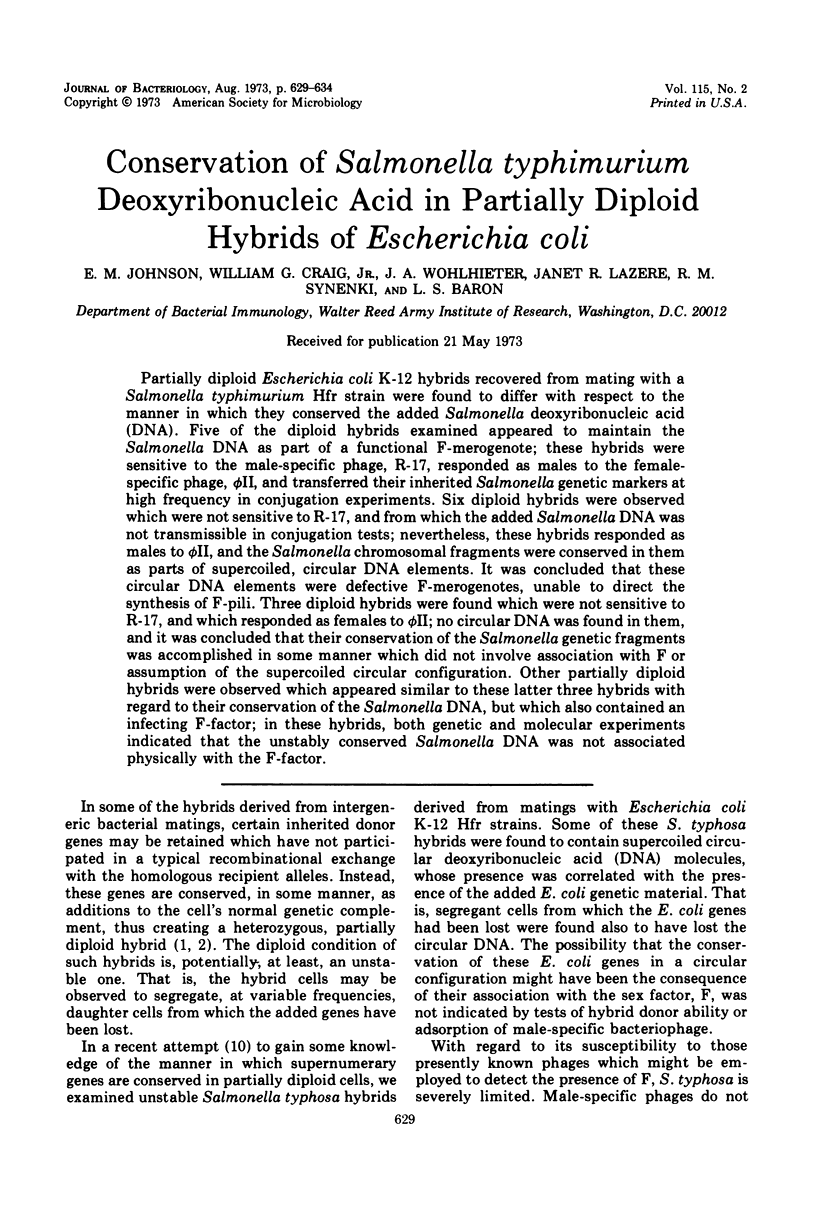
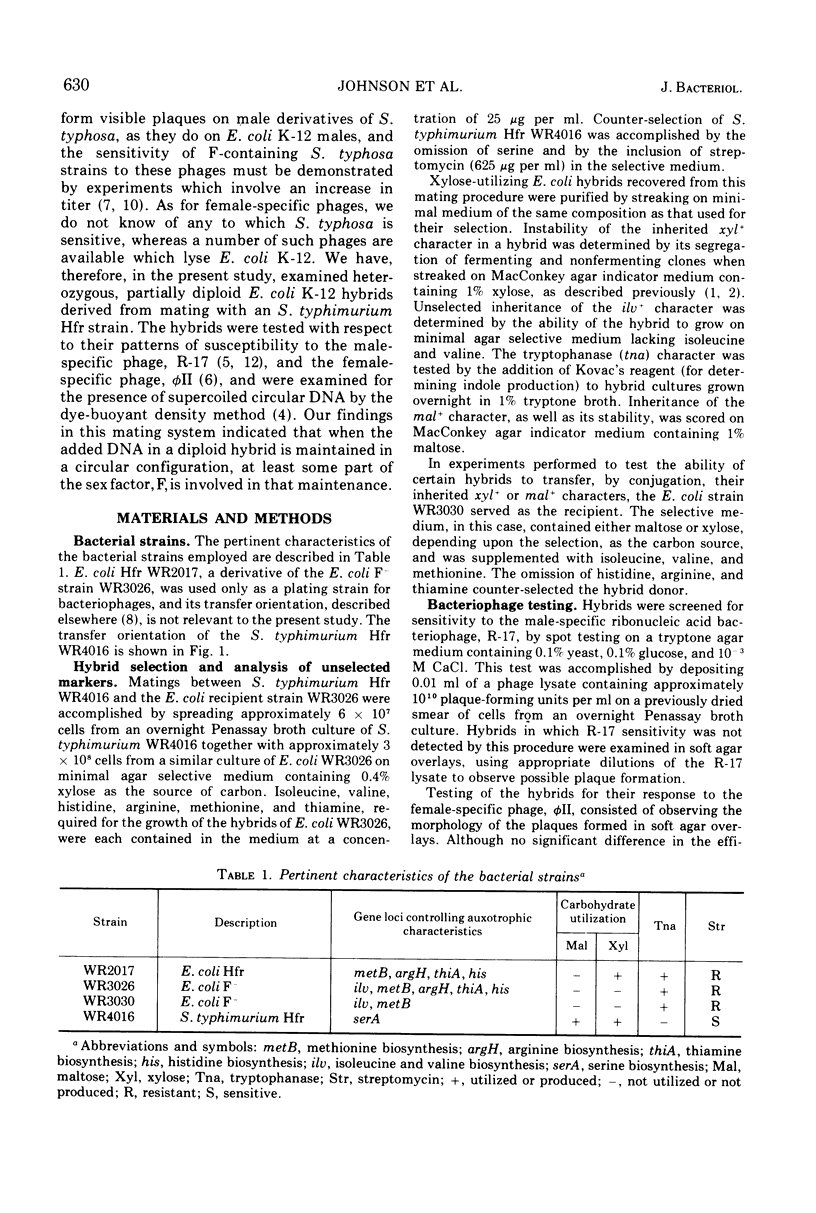
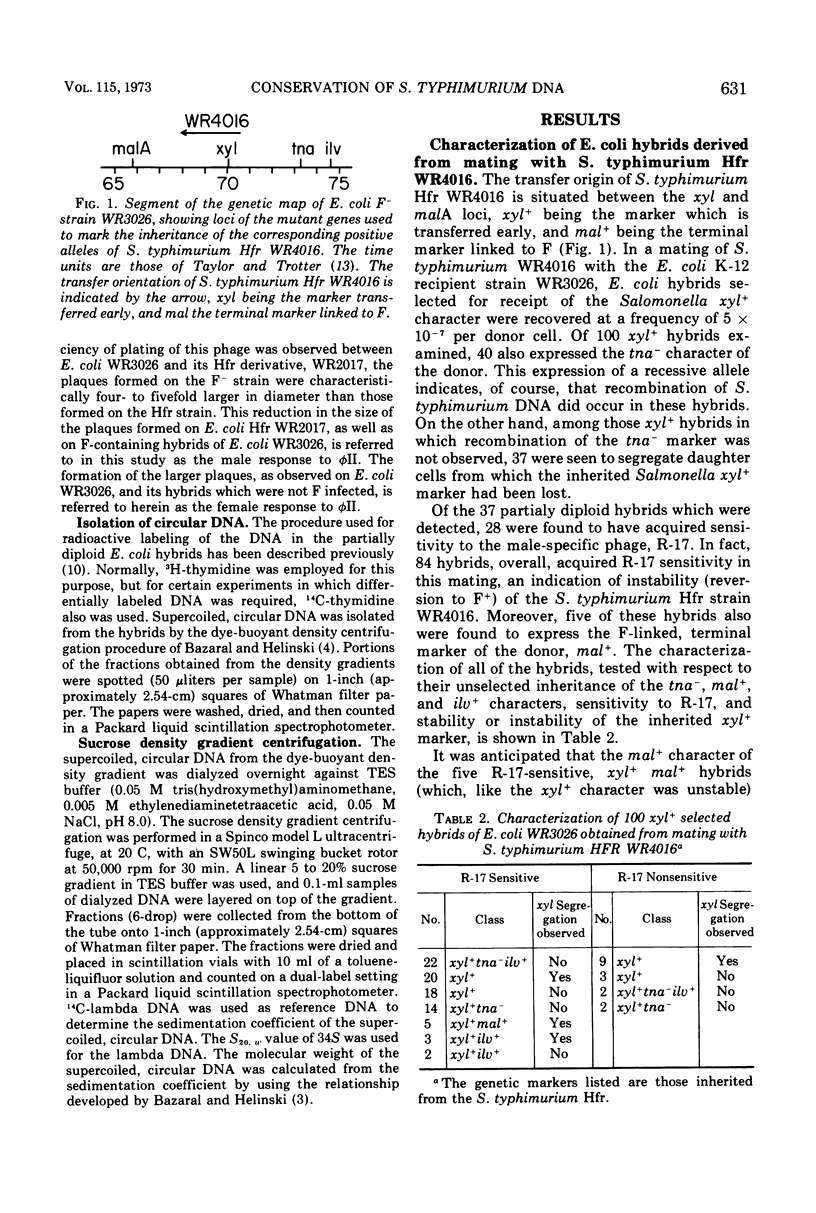
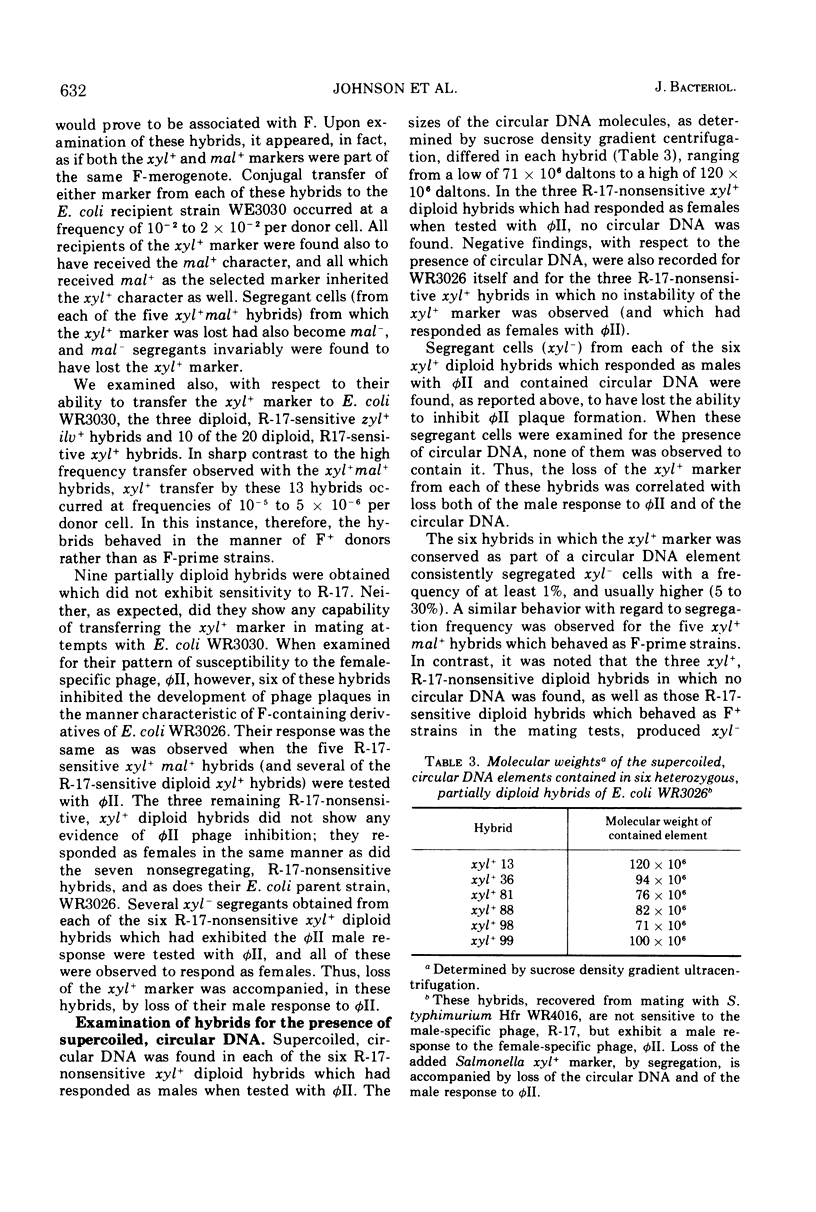
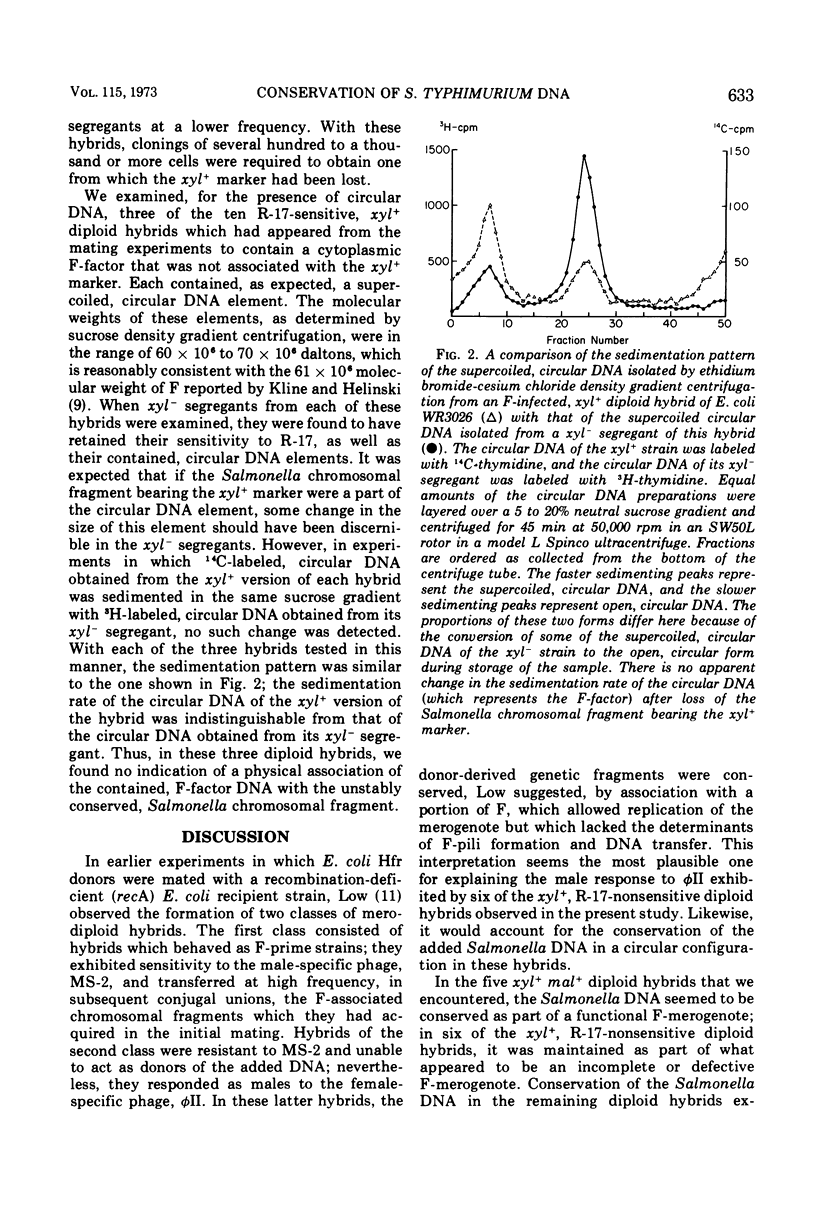
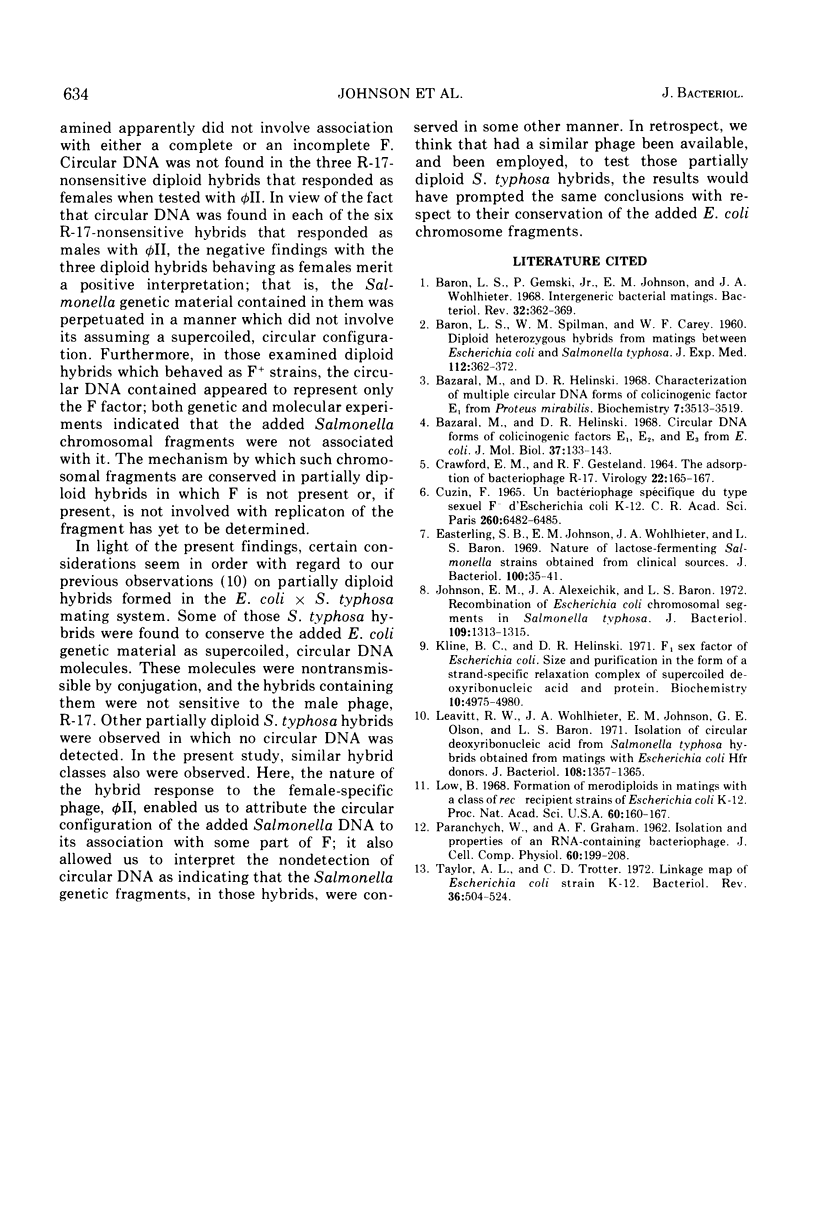
Selected References
These references are in PubMed. This may not be the complete list of references from this article.
- BARON L. S., SPILMAN W. M., CAREY W. F. Diploid heterozygous hybrids from matings between Escherichia coli and Salmonella typhosa. J Exp Med. 1960 Aug 1;112:361–372. doi: 10.1084/jem.112.2.361. [DOI] [PMC free article] [PubMed] [Google Scholar]
- Baron L. S., Gemski P., Johnson E. M., Wohlhieter J. A. Intergeneric bacterial matings. Bacteriol Rev. 1968 Dec;32(4 Pt 1):362–369. [PMC free article] [PubMed] [Google Scholar]
- Bazaral M., Helinski D. R. Characterization of multiple circular DNA forms of colicinogenic factor E-1 from Proteus mirabilis. Biochemistry. 1968 Oct;7(10):3513–3520. doi: 10.1021/bi00850a028. [DOI] [PubMed] [Google Scholar]
- Cuzin F. Un bactériophage spécifique du type sexuel F- d'Escherichia coli K 12. C R Acad Sci Hebd Seances Acad Sci D. 1965 Jun 14;260(24):6482–6485. [PubMed] [Google Scholar]
- Easterling S. B., Johnson E. M., Wohlhieter J. A., Baron L. S. Nature of lactose-fermenting Salmonella strains obtained from clinical sources. J Bacteriol. 1969 Oct;100(1):35–41. doi: 10.1128/jb.100.1.35-41.1969. [DOI] [PMC free article] [PubMed] [Google Scholar]
- Johnson E. M., Alexeichik J. A., Baron L. S. Recombination of Escherichia coli chromosomal segments in Salmonella typhosa. J Bacteriol. 1972 Mar;109(3):1313–1315. doi: 10.1128/jb.109.3.1313-1315.1972. [DOI] [PMC free article] [PubMed] [Google Scholar]
- Kline B. C., Helinski D. R. F 1 sex factor of Escherichia coli. Size and purification in the form of a strand-specific relaxation complex of supercoiled deoxyribonucleic acid and protein. Biochemistry. 1971 Dec 21;10(26):4975–4980. doi: 10.1021/bi00802a022. [DOI] [PubMed] [Google Scholar]
- Leavitt R. W., Wohlhieter J. A., Johnson E. M., Olson G. E., Baron L. S. Isolation of circular deoxyribonucleic acid from Salmonella typhosa hybrids obtained from matings with Escherichia coli Hfr donors. J Bacteriol. 1971 Dec;108(3):1357–1365. doi: 10.1128/jb.108.3.1357-1365.1971. [DOI] [PMC free article] [PubMed] [Google Scholar]
- Low B. Formation of merodiploids in matings with a class of Rec- recipient strains of Escherichia coli K12. Proc Natl Acad Sci U S A. 1968 May;60(1):160–167. doi: 10.1073/pnas.60.1.160. [DOI] [PMC free article] [PubMed] [Google Scholar]
- PARANCHYCH W., GRAHAM A. F. Isolation and properties of an RNA-containing bacteriophage. J Cell Comp Physiol. 1962 Dec;60:199–208. doi: 10.1002/jcp.1030600303. [DOI] [PubMed] [Google Scholar]
- Taylor A. L., Trotter C. D. Linkage map of Escherichia coli strain K-12. Bacteriol Rev. 1972 Dec;36(4):504–524. doi: 10.1128/br.36.4.504-524.1972. [DOI] [PMC free article] [PubMed] [Google Scholar]


